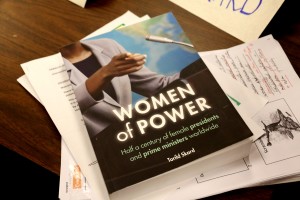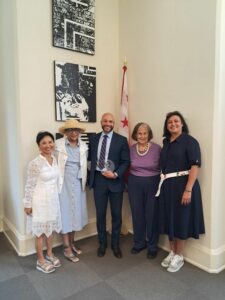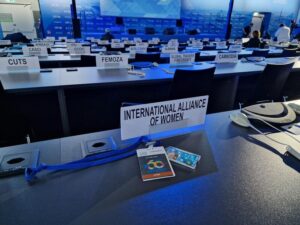 Political systems must change to get more women decision-makers
Political systems must change to get more women decision-makers
The meeting room was full when IAW organized a parallel event on women decision-makers in the Church Center in New York during the UN CSW 60 session in March. Though the world’s governments have promised to ensure women’s full and effective participation at all levels of decision-making in political life, women remain a small minority – and the more power, the fewer women. In parliaments globally women still only constitute 22 per cent, in cabinets 18 per cent and among top leaders not more than 7 per cent. Seventy years after the UN confirmed the equal rights of women and men the organization has never had a woman Secretary-General, only men.
The human rights organization Equality Now has launched a campaign to change the closed and secretive process of selecting the UN Secretary-General and get a woman in the position for the first time. Women’s organizations, advocates and ambassadors have got together and the process in the UN now has become more open and transparent, Antonia Kirkland reported at the meeting. 30 000 letters have been sent and so far three of the current seven official nominees are women. The election will take place in the course of 2016.
Studying the 73 women presidents and prime ministers in 53 countries from 1960 to 2010 Torild Skard in her book “Women of power” (Policy Press) noted that women must not only be exceptionally well qualified to rise to the top. The country must have a democratic political system and an active women’s movement demanding gender parity in the political leadership. On the basis of her research Laura Liswood , Council of Women World Leaders, noted that the women who rose to the top, faced an uphill battle and had to carry out a hero’s journey showing great courage. In addition, the country often was in crisis. But with women around women had a chance.
Since 1990 the number of democratic nations around the world has increased dramatically, but not the participation of women in decision-making. The speakers at the parallel event focused on how the political systems, particularly the political parties function. The parties are the gateway to power, but in practice they undermine democratic governance by preventing women from making progress in politics.
Globally the parties are extremely male dominated with only 10 per cent women on the average in the executive leadership. These old boys’ clubs promote the interests of men, prefer male candidates for election, particularly to high positions, uphold voting systems favoring men and assist in the financing and media coverage of male politicians. To counteract these undemocratic processes it is essential to adopt affirmative measures such as competence and confidence-building of women, consciousness-raising of men, quotas and electoral reforms in addition to continuous research and analyses of the political system and equality policies. Everyone must be involved, top and bottom.
America was built on the idea of representative democracy, but those who hold elected political office nationwide look very little like America, Brenda Choresi Carter pointed out. White men have 8 times as much power as women of color. The great majority of voters want change, but candidates and elected officials are decided by the parties, not the voters. Women lack networks and relationships, parties don’t recruit women and women don’t have access to donors. Presenting groundbreaking data and structural changes the Reflective Democracy Campaign hopes to make the political system more democratic.
India has a federal form of government with devolved powers. The village level local government is one of the biggest democratic structures in the world. To make it work, rural women must be empowered, Asha Gambhir from the All India Women’s Conference, underlined. Health, education and socio-economic development are necessary and self-help groups give women self-confidence. Not less than one third of the members and chairpersons at different levels have to be women. At national and state level, however, the representation of women is much smaller.
With a male dominated political life the question arises if women top leaders can make a difference? Torild Skard found three different categories of women. Some conformed to the norms and values of male-dominated politics and acted in the same way as their male colleagues, while others, on the contrary, challenged male domination and explicitly promoted woman-friendly policies. About half of the female leaders, however, compromised between men’s and women’s interests, trying to look after both. In spite of the difficult circumstances, women politicians made a difference in the governance of the nation. But the difference will be greater with more women in political office and stronger women’s movements.


